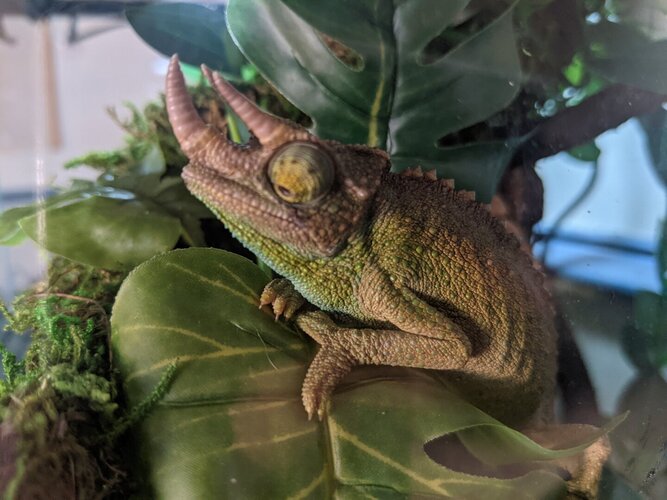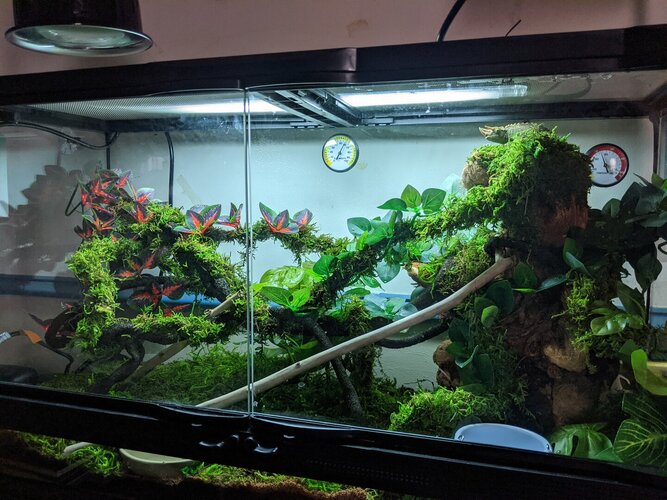Tanneraps
New Member
Hi everyone, new to the forum today and a new parent to a juvenile Jackson's chameleon. It's his first day in his enclosure and I had a few questions:
1. He spent some time today grabbing at the glass (moving to larger mesh when he gets a little bigger), but has since calmed down, is this pretty normal?
2. At the pet store I was told it may be a day or two before he'll eat while he adjusts to the new space. Has anyone else experienced that?
3. He's explored a little but seems to favor a couple spots in the habitat. Is this normal?
1. He spent some time today grabbing at the glass (moving to larger mesh when he gets a little bigger), but has since calmed down, is this pretty normal?
2. At the pet store I was told it may be a day or two before he'll eat while he adjusts to the new space. Has anyone else experienced that?
3. He's explored a little but seems to favor a couple spots in the habitat. Is this normal?






